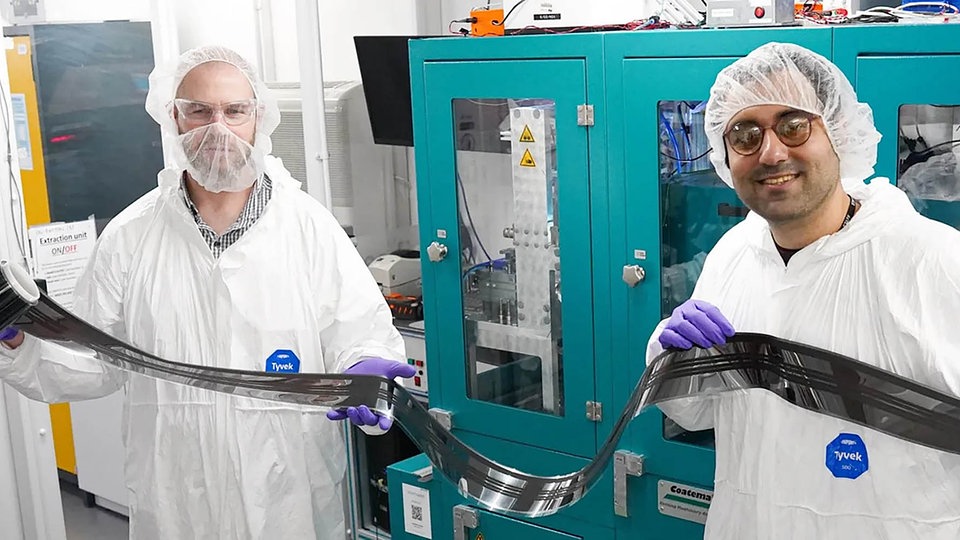At the British University of Swansea researchers have now succeeded in 3D printing solar modules for the first time. The scientists there have developed a way to produce fully printable perovskite solar cells. According to the university, in order to actually be able to print the solar film, the researchers had to find the correct mixture of solvents for coating. Until now, the first print layer had to be processed in a complex manner. The new mixture, on the other hand, simply dries as a film without dissolving the underlying layer. “This innovative layer can be applied continuously and compatibly with the underlying layers at low temperature and high speed,” says first author David Beynon.
It opens up the idea of a manufacturing process where a solar ink is added at one end and a solar cell is created at the other.
The development is promising: If fully functional perovskite solar cells can be produced quickly, mass production will not only be easier, but also more economical. The researchers believe that this could make the innovative thin-film solar cells commercially successful. According to photovoltaics professor Trystan Watson, the next challenge is to prove that the solar modules actually work. “To do that, we need to start making something that actually looks like a solar panel.” So far, the team has only printed 20 meters of the flexible substrate. The solar panels are now to be made from this material and installed on buildings.
Perowskit
Perovskite is a mineral and is considered a promising material for a new generation of solar cells. Researchers assume that the perovskite solar cell will be able to reach the upper thermodynamic limit of photovoltaic efficiency, which is 34 percent.
Dresden solar film in series production
While perovskite solar cells are still being researched, films made from so-called organic solar cells are already in series production: the Dresden-based company Heliatek, among others, now produces and develops solar films on an area of 5,000 square meters. According to company spokesman Stephan Kube, Heliatek is currently in a start-up phase in which the production volume is being increased step by step. At the same time, the foils and the production process would be further developed. This is complex and takes time, says Kube.
Heliatek is “by far” unable to meet the very high global demand with the current production volume. Therefore, strategic customers from the industry would be supplied first. The light foils are particularly interesting for industrial customers, who often cannot install heavy panels on their roofs or facades, explains Kube. In the future, the ultra-light, flexible and extremely thin solar films will also be sold to private individuals.
The Heliatek films are installed worldwide: recently, for example, 509 square meters of solar film were applied to curved roofs in the port of Barcelona, and the facade of the Samsung Advanced Institute of Technology in South Korea also received 147 square meters of Heliatek film. According to the company, more than 30 pilot projects have been implemented all over the world.
